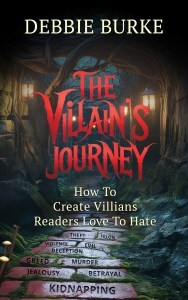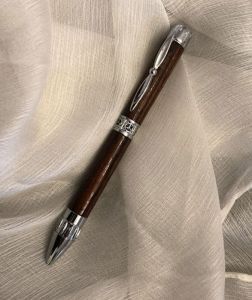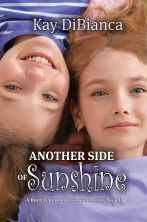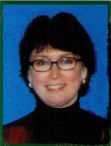THE CRAFT OF WRITING A BOOK ABOUT THE CRAFT OF WRITING – JUNE 2025
Welcome back to another episode of great writing advice on the CRAFT OF WRITING blog. This year we’re focusing on Genres. We’ll be looking at approaches to writing thrillers, mysteries, romances, and more. Each month I interview an accomplished author who writes in a particular genre, so get ready to learn from the experts!
Today’s guest is my good friend and award-winning author Debbie Burke who has taken on the task of writing a book about the craft of writing. Her new work, The Villain’s Journey, gives us insight into crafting a compelling bad guy for our stories. Click the image to go to the Amazon page.
The Craft of Writing a Book about the Craft of Writing with Debbie Burke
Share on X
* * *
 Many thanks to my good friend and master craftsman Dr. Steve Hooley who has provided me with another unique and fabulous “Wilbur and Orville 1903” propeller pen. Hand crafted by Steve, the pen is made from Ash, one of the woods the Wright brothers used to build their first aircraft. The market value of this beautiful creation is around $80.00.
Many thanks to my good friend and master craftsman Dr. Steve Hooley who has provided me with another unique and fabulous “Wilbur and Orville 1903” propeller pen. Hand crafted by Steve, the pen is made from Ash, one of the woods the Wright brothers used to build their first aircraft. The market value of this beautiful creation is around $80.00.
The name of each person who enters a comment will be put into the drawing for the pen. So join the conversation and earn a chance to win. I’ll post the name of the winner after 9 PM Central Time tonight. (Previous 2025 winners are not eligible to win.)
* * *
Welcome back, Debbie, and thank you for being on the Craft of Writing blog!
Kay, it’s always wonderful to visit with you and your readers. Thanks for inviting me again.
I understand this is the first time you’ve dipped your pen into writing a book about the Craft of Writing. What made you decide to write The Villain’s Journey and how did you decide that particular topic?
It all started with a couple of posts I wrote for The Kill Zone (TKZ) about villains and how they, not the hero, drive crime fiction. Although a story is usually seen through the hero-sleuth’s eyes, the villain is the character who actually sets the plot in motion by committing a crime.
A regular TKZ reader mentioned she’d read a lot about the hero’s journey and asked if there was a comparable villain’s journey.
When I looked for an answer to her question, I was surprised there wasn’t a comprehensive guide about villains. So I decided to try to fill that gap on the writing reference shelf.
How did you go about getting source material for your book?
I read a lot of mysteries, thrillers, and suspense, and true-crime accounts.
Readers like to talk about their favorite villains, so I asked followers of TKZ, members of the Authors Guild, Mystery Writers of America, and International Thriller Writers; writing groups, and book clubs. I even pestered strangers reading books on planes and in coffee shops. They were always very good natured and answered my questions about why certain villains fascinated them.
Hannibal Lecter, Randall Flagg (Stephen King’s recurring villain), The Joker, and Lady MacBeth are often mentioned as GOATs (greatest of all time).
Additionally, I researched psychology texts to learn what motivates people to do wrong. What are the backgrounds of psychopaths, narcissists, and predators? What triggers them?
A few people are born malicious, but some are forced into desperate situations by circumstance. Others want to protect loved ones but instead become unwitting criminals. The variations are endless and fascinating.
Can you give us a brief outline of the process—from concept to completion—that you used to write The Villain’s Journey. How was it different from writing fiction?
I’m used to writing short nonfiction articles which are like chapters in a book. So I wrote a chapter about charming, irresistible villains, then one on serial killers, then Robin Hood villains, femme fatales, and so on.
Pretty soon I had a whole bunch of chapters about different types of villains, but they needed to be organized into a logical, interesting through-line. That took time, as well as compiling an index—not fun!
Since The Villain’s Journey is a how-to guide, I created “Build-a-Villain” worksheets to help writers drill deep into their character’s motives, desires, and rationalizations. Scattered throughout the book are useful tips and techniques I learned in 35+ years of writing, critiquing, and editing.
Fiction is making stuff up. Nonfiction is backing stuff up because it needs to be factual and accurate.
I enjoy both because they challenge different parts of the brain. I’m always learning.
Did you run into any unexpected issues while writing The Villain’s Journey?
Because I cite many examples from books, films, and TV shows, I wanted to be sure not to inadvertently violate any creator’s copyright. So I had an intellectual property attorney review the manuscript to be sure everything fell under the doctrine of fair use.
What qualifications do you feel an author should have before attempting to write a book about writing?
A book about writing is essentially teaching. I’ve known authors who were gifted wordsmiths and storytellers but lousy teachers. Conversely, I’ve learned from exceptional teachers who never published a book.
The ability to communicate abstract concepts in an understandable way is the key to good teaching. And writing is full of abstract concepts that are difficult to grasp.
An author can practice by writing articles for magazines, journals, blogs, newsletters, Substacks, etc. Establish credibility with respected publications. If you discover a fresh concept or way to explain craft skills, test it out by writing short pieces. If the message resonates with readers, you might have a solid book idea.
In your opinion, why is it important for authors to read books about their craft?
Nobody knows everything. There is always more to learn. Sometimes you read a craft book and shrug because it doesn’t apply to what you’re working on at the time. However, a year from now, that same book might have exactly what you need to learn.
What are your favorite craft of writing books?
Anything by James Scott Bell and Jack Bickham; H.R. D’Costa’s series; the Thesaurus series by Angela Ackerman and Becca Puglisi.
And of course, Christopher Vogler’s The Writer’s Journey that led me to write The Villain’s Journey.
Where can we find out more about you and your writing?
Visit my website: https://www.debbieburkewriter.com/
Every other Tuesday, you’ll find me at The Kill Zone.
The Villain’s Journey – How to Create Villains Readers Love to Hate will be published July 13, 2025. It’s available now for preorder at this link.
Thanks, Debbie, for being with us today.
Kay, it’s always my pleasure!
The Craft of Writing a Book About the Craft of Writing with Debbie Burke
Share on X
***
Meet Debbie Burke
 When readers meet Debbie Burke in person, they often say, “You look like such a nice lady but you’re always killing people!” She reminds them her murders only happen on the page. Her award-winning Tawny Lindholm Thrillers feature twisty plots, quirky characters, and breakneck pacing. She lives in northwest Montana near Glacier Park where she can be found scouting locations for her next crime.
When readers meet Debbie Burke in person, they often say, “You look like such a nice lady but you’re always killing people!” She reminds them her murders only happen on the page. Her award-winning Tawny Lindholm Thrillers feature twisty plots, quirky characters, and breakneck pacing. She lives in northwest Montana near Glacier Park where she can be found scouting locations for her next crime.
***
Another Side of Sunshine
A Middle Grade Mystery featuring those two irrepressible detectives, spunky 10-year-old Reen and her shy 9-year-old cousin Joanie. And yes! There’s a villain.
“The story excels at honoring the emotional realities of childhood without veering into sentimentality. It’s a smart, well-constructed mystery that values relationships over rivalry, process over prizes, and growth over glory.” —Prairie Book Reviews
Click the image to go to the Amazon book page.
The post THE CRAFT OF WRITING A BOOK ABOUT THE CRAFT OF WRITING – JUNE 2025 appeared first on Kay DiBianca.




